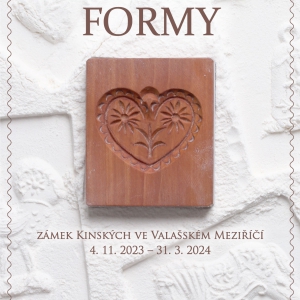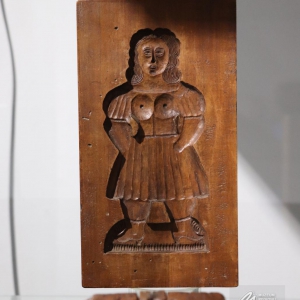
The large exhibition Gingerbread in Wallachia will be complemented by a small demonstration of gingerbread molds at Kinské Castle in Valašské Meziříčí. It will be on display in the glass niches of the exhibition space called V poschodí.
The oldest molds for extruded gingerbread were made from fired clay and were used until the 16th century. Then they were pushed out by wooden forms called “kadluby”. The forms were most often carved in pear wood, but plum, cherry, and sometimes beech wood could also be used.
Their designs were very simple at first, but later richer motifs begin to appear on them and the art of carving is perfected. In the 18th and 19th centuries, gingerbread gradually became popular among the general public and new subjects were added – hussars, dolls, doves, peacocks, various characters.
Gingerbread was made only by specialized craftsmen, the so-called gingerbread makers. The preparation of the dough was not only lengthy, but also physically demanding. The dough was left to rest for up to seven months after it was made, only then was the significantly hardened mass, which usually had to be cut with an axe, processed by hand. Until the middle of the 19th century, gingerbread and marzipan were shaped in artfully carved wooden forms with various motifs. These are today one of the few material reminders of gingerbread making, which gradually disappeared as a separate craft from the second half of the 19th century and began to merge with confectionery.

